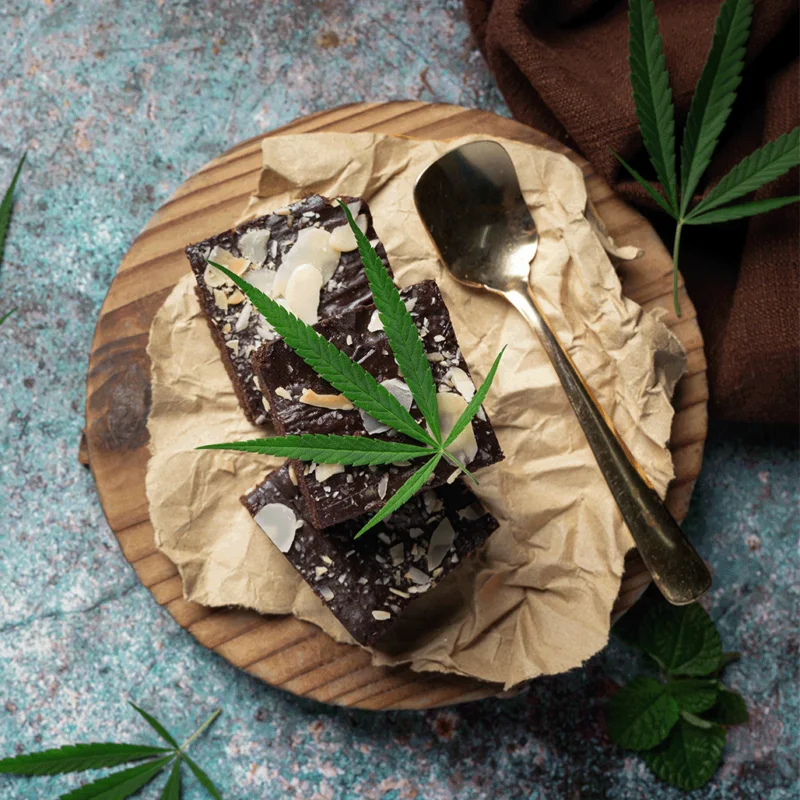In recent years, the fusion of food and health has given rise to an exciting new area of gastronomy: cooking with cannabis. One of the champions in this field is coconut cannabis oil. It combines the health benefits of coconut oil with the therapeutic properties of cannabis. This article will explore how this unique ingredient can be introduced as health benefits, how to use it and how to cook at home.
Coconut Cannabis Oil: A Superfood in Disguise

Coconut oil, lauded as a “superfood,” is known for its rich concentration of healthy fats known as medium-chain triglycerides (MCTs).
These fats are metabolized differently from other fats, leading to potential benefits like increased energy expenditure and improved satiety.
Merging coconut oil with cannabis results in a potent health concoction. The fat in coconut oil serves as an excellent carrier for cannabis, enhancing the body’s ability to absorb cannabinoids.
Additionally, the process of binding cannabis to the fat in the oil activates the cannabinoids, making them more bioavailable and effective.
Compared to olive oil, which usually contains saturated fats of less than 20%, or butter containing about 60% saturated fats, coconut oil usually contains more than 80% saturated fats. This means that coconut oil can hold more cannabinoids during infusions, making it more potent.
Incorporating Coconut Cannabis Oil in Your Kitchen
Coconut cannabis oil can seamlessly replace regular coconut oil or other fats in a myriad of recipes. Here are a few ideas to get you started:
Bulletproof Coffee
By blending your hot coffee with a spoonful of coconut cannabis oil, you can experience the slow release of energy from the healthy fats and the therapeutic effects of cannabis. Additionally, the combination of coffee and cannabis can provide a unique sensory experience that invigorates your senses and enhances your focus.

Sautéed Veggies
Lightly sauté your vegetables in coconut cannabis oil. As a result, you’ll have a dish packed with vitamins, minerals, and the wellness benefits of cannabis with the subtle sweetness.
Cannabis Infused Smoothie Bowls
Blend fruits with a dollop of coconut cannabis oil for a wellness-packed smoothie. Additionally, top it with granola, seeds, or nuts, and voila, your healthy and refreshing meal is ready!
Baking with a Buzz
Swap regular fat in your baking recipes with coconut cannabis oil for an added wellness kick. From brownies to banana bread, the possibilities are endless.
Incorporating Coconut Cannabis Oil in Your Kitchen
Materials Needed:
- 1 cup of coconut oil
- 7-10 grams of decarboxylated cannabis (the amount can be adjusted depending on the desired potency)
- Slow cooker or double boiler
- Cheesecloth or fine strainer
- Container or jar with lid
Decarboxylation: A Crucial First Step
Raw cannabis will not give you any effects when you put it in oil. Weak oven heating helps to convert THC and CBD acids directly into THC and CBD without removing them from cannabis. This process is crucial because it allows the cannabinoids to effectively bind to the fats in the coconut oil and ensures their potency in the final product.
Preheat your oven to 240 degrees Fahrenheit (115 degrees Celsius). Grind your cannabis finely, spread it evenly over a baking sheet lined with parchment paper, and bake it for 30 to 40 minutes. Stir occasionally to ensure even heating.
Creating the Infusion: Simmer and Stir
Now it’s time to infuse the oil with the decarboxylated cannabis. You can do this either on your stovetop or in a crockpot or slow cooker, or even in a double boiler.

If you use your slow cooker, make sure you set it on a low-temperature setting and cook for 4-6 hours, stirring every 20 minutes or so. Using a double boiler, set it on low and cook for at least 6 hours.
If you’re cooking it on the stovetop, 150 to 180 degrees Fahrenheit would be the best temperature for infusion, and remember to maintain this temperature and not let it go over 200 degrees Fahrenheit.
Straining the Infusion: Capture the Goodness
After infusing for several hours, it’s time to separate the cannabis-infused coconut oil from the plant matter. To do this, place a cheesecloth or fine strainer over a container or jar, and slowly pour the mixture over it. Allow the oil to strain naturally; squeezing the cheesecloth or pushing down on the mixture could result in unwanted plant material in your oil.
Storing Your Coconut Cannabis Oil: Cool and Preserve
Allow the oil to cool before sealing the container or jar. Your oil should be stored in a cool, dark place to maintain its potency and freshness. It can be kept for up to 90 days.
Conclusion: Embrace the Power of Nature
Creating your own oil is a rewarding process that allows you to take control of the ingredients you’re putting in your body. Moreover, this potent concoction can be a great addition to your cooking, skin care routine, or wellness regimen. However, as with any cannabis-infused product, it’s important to exercise caution and start with a small dose to gauge your body’s response.

A Note of Caution
While cooking with coconut cannabis oil can be fun and healthful, it’s important to remember that the potency of cannabis can vary significantly.
Start with small amounts and gradually increase as you become familiar with your tolerance. Also, be aware of the delayed onset of effects when consuming cannabis-infused edibles.
What determines the choice of cannabis to cook and what to pay attention to is mentioned in the article Cannabis Tea: Relaxing Drink. It also contains information on cannabis tea and how it is prepared, from which we advise you to read.
APE recommends For your coconut cannabis oil:
- Purple Shot is strong relaxing effect and deep physical sensations. It can give coconut cannabis oil sedative properties and help relieve stress and insomnia.
- Kool Aid is bright and sweet aroma. It can give your oil a fruity and sweet taste, making it attractive for making sweet, perfectly complementary desserts or confectionery.
- Ape Breath usually has strong relaxing and sedative properties. It can be a good choice for cooking if you are looking for effects that will help relieve pain, relieve tension and relax.
- Ape Freeze is high THC levels and intense effects. If you are looking for a variety with potent psychoactive effects, it can be a suitable choice.
- Marshmallow OG is usually characterized by sweet aromas and relaxing effects. It can make oil soft and sweet, making it attractive for making desserts or sweet drinks.
Embark on a Culinary Adventure
Cooking with coconut cannabis oil opens up a whole new world of flavors and health benefits. It’s a unique way to introduce the wellness advantages of cannabis into your diet. So why not don your chef’s hat and start experimenting? Your taste buds – and your body – might thank you.














